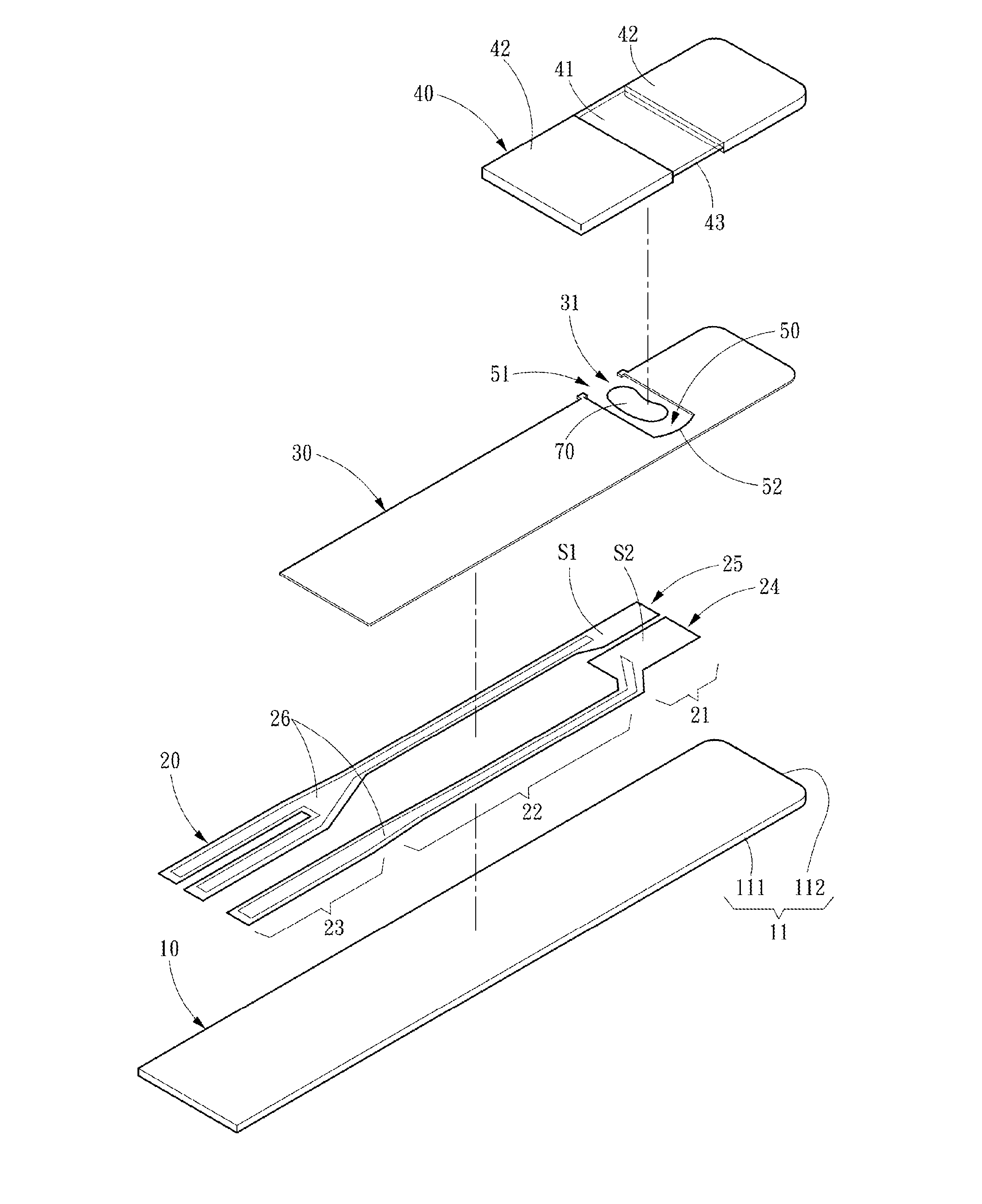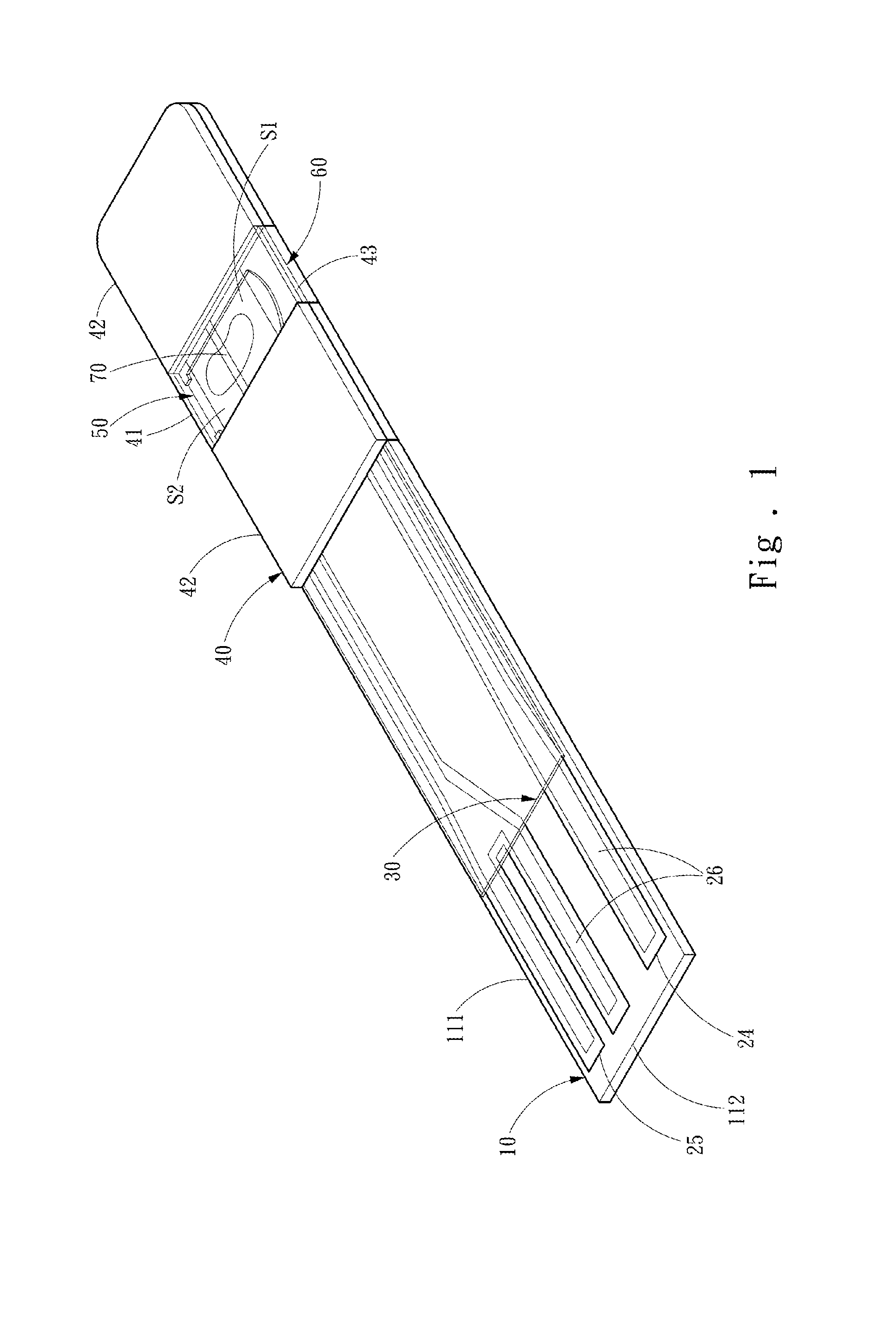Lactate dehydrogenase detector
a dehydrogenase and detector technology, applied in the field of proteinase detectors, can solve the problems of lack of accuracy and time-consuming processes of the process, and achieve the effect of reducing the cost of the process and improving the accuracy
- Summary
- Abstract
- Description
- Claims
- Application Information
AI Technical Summary
Benefits of technology
Problems solved by technology
Method used
Image
Examples
Embodiment Construction
[0013]The technical contents of the present invention will be described in detail below. Refer to FIGS. 1-5. FIG. 1 is a perspective view schematically showing the appearance of a lactate dehydrogenase detector according to a first embodiment of the present invention. FIG. 2 is an exploded view schematically showing the structure of the lactate dehydrogenase detector according to the first embodiment of the present invention. FIG. 3 is a perspective view schematically showing the appearance of a lactate dehydrogenase detector according to a second embodiment of the present invention. FIG. 4 is an exploded view schematically showing the structure of the lactate dehydrogenase detector according to the second embodiment of the present invention. FIG. 5 is a top view schematically showing the lactate dehydrogenase detector according to the first embodiment of the present invention. The lactate dehydrogenase detector of the present invention is used to detect the content of the lactate d...
PUM
| Property | Measurement | Unit |
|---|---|---|
| hydrophobic | aaaaa | aaaaa |
| circumference | aaaaa | aaaaa |
| transparent | aaaaa | aaaaa |
Abstract
Description
Claims
Application Information
 Login to View More
Login to View More - R&D
- Intellectual Property
- Life Sciences
- Materials
- Tech Scout
- Unparalleled Data Quality
- Higher Quality Content
- 60% Fewer Hallucinations
Browse by: Latest US Patents, China's latest patents, Technical Efficacy Thesaurus, Application Domain, Technology Topic, Popular Technical Reports.
© 2025 PatSnap. All rights reserved.Legal|Privacy policy|Modern Slavery Act Transparency Statement|Sitemap|About US| Contact US: help@patsnap.com



